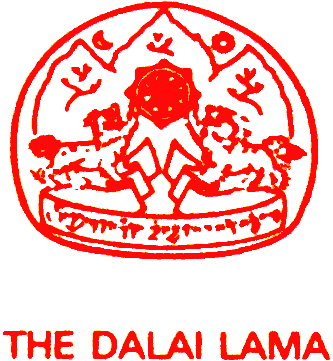
photo credit
ABOUT
|
|
AMERICAN INSTITUTE OF BUDDHIST STUDIESThe American Institute of Buddhist Studies was founded in 1972 — at the request of H.H. the Dalai Lama and the late Ven. Geshe Ngawang Wangyal — with the ambitious mandate to translate and publish the originally Indian Buddhist artistic, scientific, and religious works collected in the Tibetan Tengyur (bstan 'gyur). AIBS received its 501(c)3 tax exempt status as The Buddhist Studies Institute in 1974. In 1977 the Buddhist Studies Institute changed its name to The American Institute of Buddhist Studies, keeping the same 501(c)3 tax exempt status. During the 1970s and 80s, with funding from the Institute for Advanced Studies of World Religions, the National Endowment for the Humanities, and private donors, translations were done slowly and steadily, while translators were systematically trained. In 1988, the AIBS secured its program for long term operation by entering into an historic affiliation with Columbia University, creating the Center for Buddhist Studies (CBS) and assisting the University in developing the endowment for the Jey Tsong Khapa Professorship of Indo-Tibetan Buddhist Studies. Its incumbent was formally charged with the oversight of the systematic translation of the Tengyur collection and its associated literature, and the income from its growing endowment was dedicated to that monumental task. In the last half-century, Indo-Tibetan scholarship has progressed markedly and a new generation of highly skilled and dedicated scholars has emerged. With improved analytical and technological tools, scholars are producing new translations, revising the pioneering works of their predecessors, and sharpening the critical edge of Buddhological, textual, and comparative methodologies. THE TENGYUR COLLECTIONThroughout the first millennium CE, all of India’s classical "outer" arts and sciences (Tibetan: rigs gnas; Sanskrit: vidyāsthāna) — including linguistics, medicine, astronomy, political theory, ethics, art, and so on — as well as all of her classical "inner" arts and sciences (philosophy and the sciences of mind, meditation, yoga, and so on) engendered numerous renaissances across all of Asia. The knowledge comprising these arts and sciences was distilled and preserved in the thousands of scientific treatises (śāstra) held by the great Indian Buddhist university libraries such as those of Nalanda, Vikramashila, and Odantapuri. It is estimated that these Indic treasuries amounted to over one hundred times the holdings of the Library of Alexandria. While much of the explicitly Buddhist tradition was later lost in India, essential treatises were systematically translated into Tibetan by teams of scholars during the 7th–12th centuries CE. The resulting collection, preserved as the Tibetan Tengyur (bstan 'gyur), consists of translations of about 4000 Sanskrit works by over 700 Indian authors. The texts of the Tibetan Tengyur thus provide the essential key to unlock the knowledge not only of the classical Indian Buddhist arts and sciences but also of all the later Tibetan innovations which, rooted in this Indic tradition, were developed and refined for thirteen hundred years in Tibetans’ own studies, practices, and achievements. TENGYUR TRANSLATION INITIATIVEHis Holiness the Dalai Lama always says he is the "son of the great Pandits of Nalandā." Nalandā was the great Buddhist Monastic University of classical India, delivering enlightenment sciences and world-transforming arts to millions of seekers from all over Eurasia. Those "Great Pandits" were genius adepts like Nāgārjuna, Āryāsanga, Dharmakīrti, Chandrakīrti, et al., and their voices are recorded in around 4000 works of sciences and arts that were translated into Tibetan. The Nalandā Library, “Jewel Treasure Ocean” (Ratnodadhī), was the greatest of the "Libraries of Alexandria" of the classical world, repository of human knowledge with achievement since unrivalled, especially in the field of the "Inner Sciences." It was destroyed a thousand years ago, along with up to 30 million texts suspected to have been available there and at its sister university, Vikramaśīla. All but 5% of even just those 4000 translated texts were thus lost in the original Sanskrit. Only around 7% were translated into ancient Chinese. Fortunately, these selected 4000 most important masterpieces have survived, preserved in the Tibetan Tengyur Collection in lucid, flawless Tibetan translation. Thanks to the kind inspiration of contemporary Tibetan master sages, such as H.H. the Dalai Lama, we are just beginning to translate, interpret, understand, and put into practice the teachings contained in these works. In this intense time of world crisis, the Inner Sciences are vital to survival, as they must urgently provide the methods for we humans to transcend our crippling delusions of self-estrangement from nature and other beings, and our self-destructive habits of greed and hatred that threaten all life with rampant consumerism and reckless militarism. Modern "inner sciences" of psychology and neuroscience are advancing tremendously, just held back on the brink of success by materialistic reductionism. Therefore, the voices of the great scientist sages of Nalandā must be heard, as they teach us what we need to know about mind being the most effective force in nature—and its control, cultivation, and accelerated evolution now being the key method of saving the world for all future generations. DALAI LAMA LETTER OF SUPPORT
|


